— by Margie Doyle —
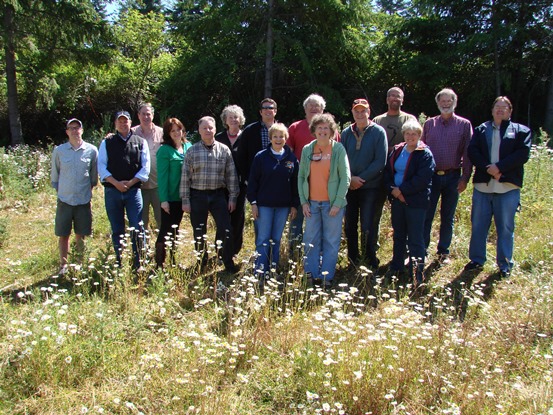
Orcas Recycling Services/The Exchange Board with the CARTM board and county officials and staffs from San Juan and Tillamook Counties. Photo courtesy of Ron Glasset
The board of directors of Orcas Recycling Services(ORS)/The Exchange, a historic island non-profit that took over operations of the Orcas Waste Transfer Station in 2013 from San Juan County, spent all day Saturday last week with CARTM, their counterparts from Manzanita, Oregon in Tillamook County.
CARTM is a non-profit recycling center located in Manzanita, a Pacific Ocean beach town with a somewhat smaller population than Orcas Island. Like Orcas Island, Manzanita also experiences a significant bump in summer tourist population. “It’s is slammed with garbage and tourists then,” says ORS/The Exchange Director Pete Moe.
“CARTM operates a unique one-stop Recycling Center, The Refindery resale store, and the Manzanita Transfer Station for solid waste (trash). We encourage the creative re-use of materials; we actively divert materials from the waste stream; and we encourage people to re-think what is ‘waste’ each time an item is discarded. We reduce, re-use, and recycle solid waste otherwise destined for the landfill.
“We remind ourselves everyday that our first and best job is to support our community’s efforts to recognize and recover value in otherwise discarded materials and to inspire creative re-use of those materials.” (from the website, www.cartm.org)
CARTM’s success was first called to Moe’s attention by Orcas-Manzanita resident Linda Henry. The main difference between the two non-profits is that Tillamook County pays for CARTM’s waste-hauling operations — and gets the revenue from the “dumping” fees — whereas ORS pays for trucking non-reusable/non-recyclable waste to an eastern Washington landfill. That is ORS’s single biggest expense, says Moe. However, ORS gets the revenue from waste disposal fees to offset its hauling costs.
- CARTM recycling in Manzanita Oregon
- The front entrance to CARTM
- Interior areas are separated into individual “shops” such as the library and the art gallery, lower right
- The intake area
- Recycle items are sorted outside the CARTM building
- Outdoor sheds, still under shelter
- Recycled paint identifies outdoor sheds
- Thanks for sharing the vision and the mission!
Moe explains that running the transfer station waste disposal is just one part of the ORS/The Exchange operation; and he distinguishes between recycling and reuse. Reuse is the most beneficial outcome of a resourcing facility, with items moving on to new owners. Recycling is a critical but expensive use of ORS/The Exchange energies, as it usually entails sorting and deconstructing items before baling them and selling them to recycling production facilities.
“Reuse is the most efficient form of recycling because you’re not breaking down the item. It skips the recycling systems of sorting and converting, which are massively energy-dependent. for example plastics, aluminum and glass,” says Moe. He also spoke of the “purity” of recycled items massed together in bales. The less machinery involved, the purer the material is apt to be.
Last Saturday, all ORS board members — Tim Blanchard, Larry Coddington, Michael Greenberg, Kate Hansen, Ian Harlow, Susan Malins, Bruce Rylander and Wendy Shinstine — with Moe and Exchange project manager Ken Katz, met with CARTM staff, board and the Tillamook County Solid Waste Management team. San Juan County Councilman Rick Hughes was also there. Katz and David Kau, architect, are designing the new Exchange, to be located on County land at the same site as the transfer station.
The group met at the transfer site and toured the landfill and infrastructure. “The Tillamook County waste managers were particularly interested in how we moved garbage and our volumes,” Moe said.
The afternoon was spent at Random Howse in Eastsound where they reviewed slideshows of the old Exchange, design plans, and CARTM’s operations at length. “We paused on each slide to discuss it for 10 or 15 minutes,” Moe said. They shared information about budgets, staffing and economies of scale in their similar operations, among various resource center topics.
The timeline for a new Exchange operation is first dependent on construction of a site road that will enter at the western driveway (where the exit is now) and loop around north past the scales and the north side of the planned building before exiting at the southeastern corner onto Orcas Road, (where the entrance is now located). Parking and the public entrance to the new Exchange building will be on the south side, just beyond where the “Z-wall” is now. Moe expects that construction of the road will start in August.
He said, “CARTM is where we want to be in two years,” and encourages board members and all the Orcas public to tour the site, just south of Cannon Beach in Oregon, as he did recently with his two school-aged kids. There he explored:
- a “donor wall” with tokens representing each donor incorporated into a mosaic
- an art gallery, all works composed of recycled materials
- a library, where an iron bathtub’s been re-purposed into a lounging sofa
- departments separated into electronics, furniture, housewares and similar items
- outside recycling bins and dumpsters
- outside sheds or booths made from recycled lumber that house constructions materials, windows, lawnmowers, bicycles.
Throughout the waste disposal/recyle/reuse center are standardized signs, all made from recycled paint. Volunteers staff each department, usually working one or two days per week.
The new Exchange on Orcas will have solar panels on the south-facing roof, plastic windows and sliding barn and garage doors. Separating intake from the reuse and recycling areas will improve the operations from the old Exchange, which often had a bottleneck at the parking area. After intake, items will be sorted, cleaned and tested before being made available to Exchange visitors.
Moe expects that the Exchange could re-open with two or three new full-time positions, similar to CARTM’s staff of a Director, a site manager, and a re-use/intake manager. In addition, he says there will be several new part-time positions to help with reuse. Currently ORS/The Exchange employs two full-time and four part-time employees, in addition to several local contractors involved in project management, public relations and accounting. “I could see the staff easily reaching 10-12 people, and that wouldn’t include the volunteers we expect to have involved as well.”
Moe is optimistic that the new Exchange on Orcas will be open by the end of this year. He highly values Ken Katz’ experience in dealing with county processes and in building the non-profit cooperative Orcas Food Coop with volunteer labor.
Numerous people have offered their services already, Moe says, and volunteers are encouraged to go to the ORS/Exchange website and volunteer their particular talents in service to the mission of “reduce, reuse, recycle.” (go to website exchangeorcas.org or email: info@exchangeorcas.org )
Orcas Island can look forward to touting its new Exchange as a tourist attraction and a poster child for zero-waste, reduce-reuse-recycle communities.
Reminder: On Saturday, June 27, the Exchange hosts the Hazardous Waste pick-up. To learn more about this free disposal event, go to: https://www.exchangeorcas.org/hazardous-waste-pickup-june-27/
**If you are reading theOrcasonian for free, thank your fellow islanders. If you would like to support theOrcasonian CLICK HERE to set your modestly-priced, voluntary subscription. Otherwise, no worries; we’re happy to share with you.**

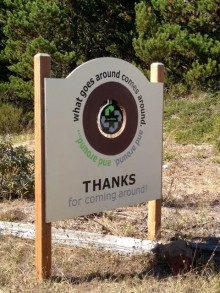
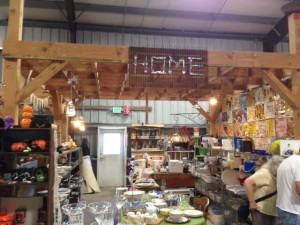
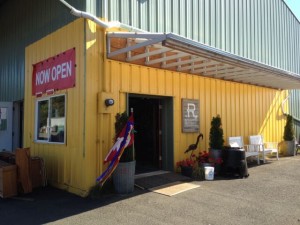
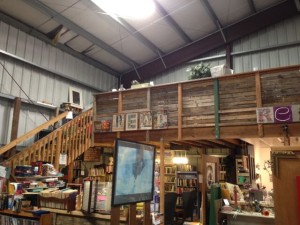
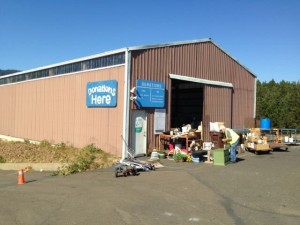
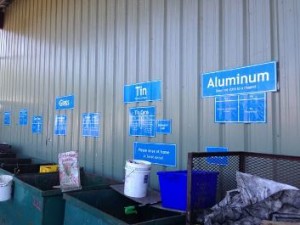
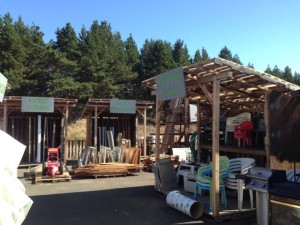
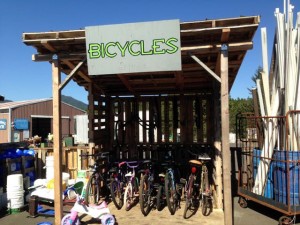
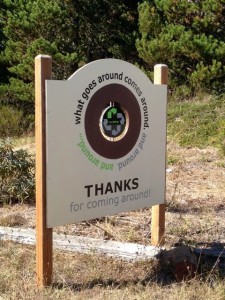

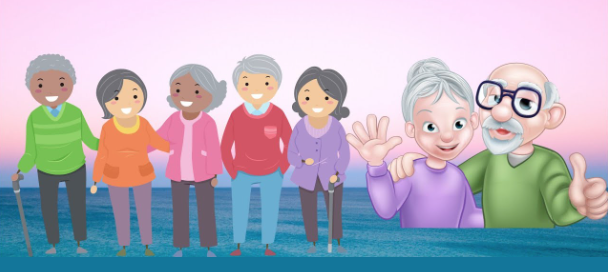


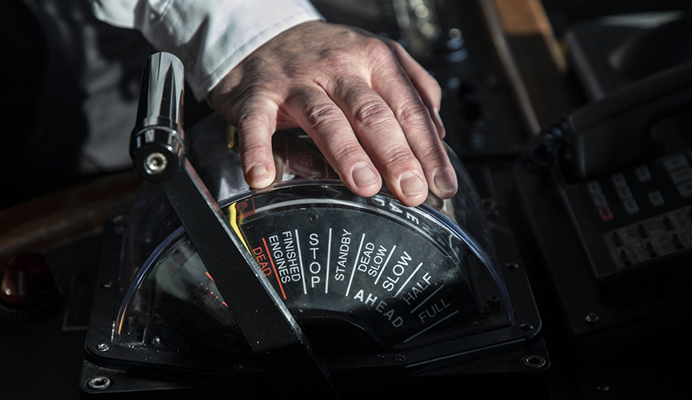
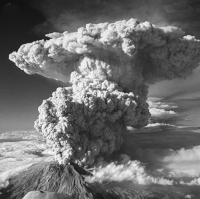

For fun Cart’m has a Trash Bash once a year. Prizes are awarded for costumes out of recycled material, a rock and roll dance and an art show. Hot Dogs, sodas and whatever for sale. Turns out lots of locals and tourists. It is a fund raiser.